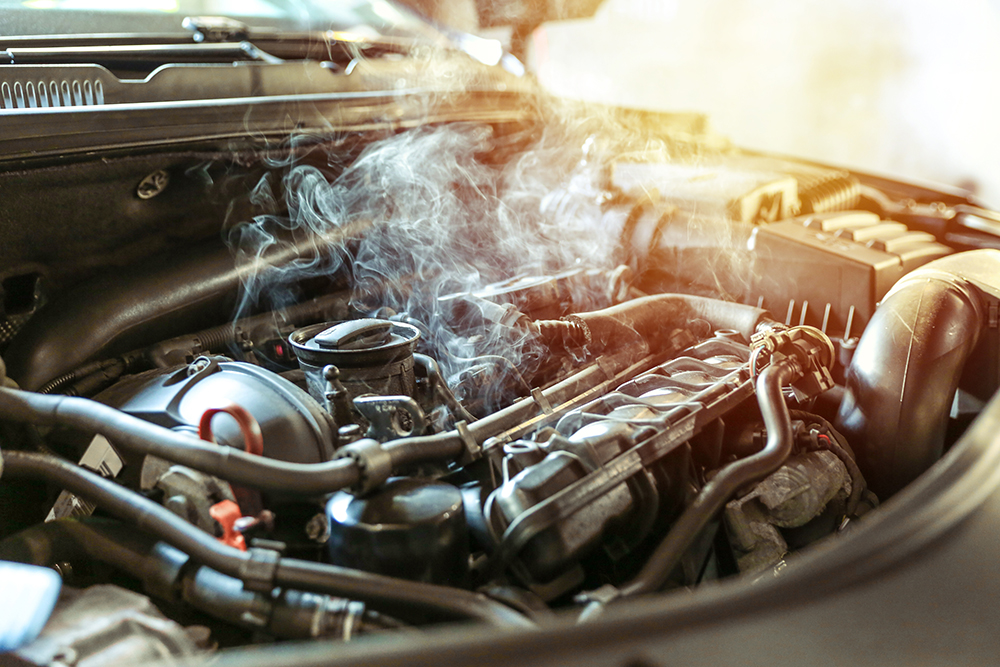What to Do When Your Engine Overheats

An overheating engine is a serious issue that can lead to significant damage if not addressed promptly. When your engine starts to overheat, it’s crucial to take the right steps to prevent further harm and ensure your safety. Here's a handy guide on what to do if you find yourself in a situation with an overheating engine.
Recognize the Signs of an Overheating Engine
Before taking action, it's important to recognize the warning signs that your engine is overheating:
- Temperature Gauge: The most obvious sign is the temperature gauge on your dashboard moving into the red zone or a warning light coming on.
- Steam or Smoke: Steam (often mistaken for smoke) may start billowing from under the hood, usually around the front of the car.
- Strange Smells: You might notice a sweet smell (like syrup) from leaking coolant or a burning smell from the engine.
Step 1: Turn off the AC and turn on the heater.
As soon as you notice your engine overheating, turn off the air conditioning (AC) to reduce the strain on the engine. Then, turn on the heater to its highest setting. This may seem counterintuitive, but it helps pull heat away from the engine, potentially lowering the temperature.
Step 2: Find a safe place to pull over.
If the temperature gauge continues to rise, or if steam starts to escape from under the hood, pull over to a safe location as soon as possible. Turn on your hazard lights to alert other drivers and park your vehicle. If you're on the highway, try to find an exit or pull over to the shoulder where it's safe.
Step 3: Turn off the engine.
Once you’ve safely pulled over, turn off the engine immediately. This is critical to prevent further overheating and potential engine damage. Allow the engine to cool down completely, which could take anywhere from 15 minutes to an hour, depending on the severity of the overheating.
Step 4: Do not open the hood immediately.
While it's tempting to pop the hood right away, do not open it immediately if you see steam. Opening the hood too soon can expose you to hot steam or boiling coolant, which can cause serious burns. Wait until the engine has cooled down enough for the steam to subside.
Step 5: Check the coolant level.
After the engine has cooled, carefully open the hood and check the coolant level in the reservoir tank. If the coolant level is low or empty, this could be the cause of the overheating. You can try adding coolant (or water, if coolant is unavailable) to the reservoir to see if this resolves the issue temporarily.
Step 6: Inspect for leaks or other issues.
If the coolant level is low, inspect the engine bay for any signs of leaks. Look for wet spots under the car or on engine components, which may indicate a leaking hose, radiator, or water pump. If you notice any significant leaks, it's best to avoid driving the car and call for roadside assistance instead.
Step 7: Restart the engine carefully.
Once you've added coolant and inspected the engine, restart the engine and monitor the temperature gauge. If the temperature remains stable, you may be able to carefully drive to a nearby auto repair shop. However, if the engine continues to overheat or if you notice further issues, turn off the engine and seek professional assistance.
Step 8: Drive to an auto mechanic or call for roadside assistance.
Even if the overheating issue seems to be resolved, it's important to have your vehicle checked by a professional auto mechanic as soon as possible. Overheating can be a symptom of a more serious underlying problem, such as a faulty thermostat, a broken water pump, a clogged radiator, or a head gasket failure. An auto repair technician can diagnose the cause and prevent future occurrences.
Preventive Measures to Avoid Overheating
To reduce the risk of engine overheating in the future, consider the following preventive maintenance steps:
- Regularly Check Coolant Levels: Ensure your coolant is topped up and that the mixture of antifreeze and water is correct.
- Inspect the Cooling System: Have your cooling system, including the radiator, hoses, and water pump, inspected regularly.
- Watch for Leaks: Check for any signs of coolant leaks under your vehicle.
- Maintain the Thermostat: Ensure the thermostat is functioning properly to regulate the engine's temperature.
- Replace the Radiator Cap: A worn or faulty radiator cap can cause coolant to escape, leading to overheating.
Dealing with an overheating engine can be stressful, but knowing what steps to take can help prevent serious damage and keep you safe. By recognizing the signs of overheating, responding quickly, and taking preventive measures, you can avoid costly repairs and keep your vehicle running smoothly. Remember, when in doubt, it's always best to consult an auto repair specialist like the team at Metro Motor to diagnose and repair any underlying issues.
Vehicle care information made available by Metro Motor is presented as helpful advice for general maintenance and should not be construed as instructions for at-home vehicle service. Be sure to consult your owner’s manual and a licensed, professional mechanic for diagnostics and repair.
